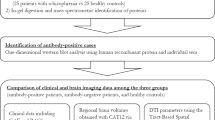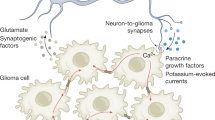Abstract
IN 1967, Tomasi and Kornguth1 described the purification and partial characterization of a basic protein from pig brain which they later2 suggested was a new tissue specific histone. This was a reasonable assumption considering the general properties of the molecule but it would now seem likely that this protein is in fact one of the basic proteins of myelin. It is now reasonably well established that it is the basic proteins extracted from myelin which are responsible for the experimentally induced allergic encephalomyelitis in animals3, and Bauer4 has recently suggested that there is statistical evidence for the homology of the main determinant of the human encephalitogenic protein (residues 112–122)5 and a part of the amino acid sequence of the histone fraction F2A1. The similarity between the amino acid composition of the myelin basic protein and histones has been noted2 and the differences stressed5, but there can be no doubt that they are quite different proteins. Careful examination of the analysis given by Caspary and Field6 of their encephalitogenic protein of human origin and the purified histone fraction F2A17, however, reveals a remarkable similarity. This being so, and because of the importance of the macrophage electrophoretic mobility (MEM)8 test, which may indicate the existence of malignant neoplasia particularly at an early stage of development, and because of the interest in the isolation of the tumour specific basic protein9, we thought it advisable to test the various histone fractions for their effect in this system. The five histones used were highly purified fractions prepared and characterized by methods which have all been described previously10. They were tested as described by Pritchard et al.11 and the results are given in Table 1.
This is a preview of subscription content, access via your institution
Access options
Subscribe to this journal
Receive 51 print issues and online access
$199.00 per year
only $3.90 per issue
Buy this article
- Purchase on Springer Link
- Instant access to full article PDF
Prices may be subject to local taxes which are calculated during checkout
Similar content being viewed by others
References
Tomasi, L. G., and Kornguth, S. E., J. biol. Chem., 242, 4933 (1967).
Tomasi, L. G., and Kornguth, S. E., J. biol. Chem., 243, 2507 (1968).
Carnegie, P. R., Bencina, B., and Lamoureux, G., Biochem. J., 105, 559 (1967).
Bauer, K., Biochem. J., 126, 1245 (1972).
Carnegie, P. R., Biochem. J., 123, 57 (1971).
Caspary, E. A., and Field, E. J., Ann. N.Y. Acad. Sci., 122, 182 (1965).
Johns, E. W., Biochem. J., 105, 611 (1967).
Field, E. J., and Caspary, E. A., Lancet, ii, 1337 (1970).
Caspary, E. A., and Field, E. J., Br. med. J., 2, 613 (1971).
Johns, E. W., in Histones and Nucleohistones (edit. by Phillips, D. M. P.), 1 (Plenum Press, London, 1971).
Pritchard, J. A. V., Moore, J. L., Sutherland, W. H., and Joslin, C. A. F., Br. J. Cancer, 27, 1 (1973).
Phillips, D. M. P., in Histones and Nucleohistones (edit. by Phillips, D. M. P.), 47 (Plenum Press, London, 1971).
Author information
Authors and Affiliations
Rights and permissions
About this article
Cite this article
JOHNS, E., PRITCHARD, J., MOORE, J. et al. Histones and Cancer Test. Nature 245, 98–99 (1973). https://doi.org/10.1038/245098a0
Received:
Issue Date:
DOI: https://doi.org/10.1038/245098a0
This article is cited by
-
Isolation of histone proteins from rat normal and tumour blood plasma
Experientia (1978)
Comments
By submitting a comment you agree to abide by our Terms and Community Guidelines. If you find something abusive or that does not comply with our terms or guidelines please flag it as inappropriate.



